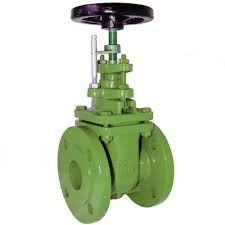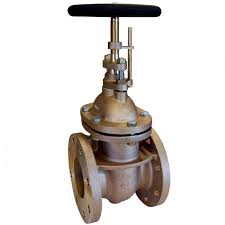Marine Gate Valve Bronze Body JIS5K Undrilled Flange

The Application of Marine Gate Valve
As a leader in the industry, Cameron offers a diverse range of marine valve solutions tailored for the harshest offshore environments. Among their offerings are the robust bronze marine gate valves and marine bronze gate valves, engineered to withstand the corrosive elements encountered in marine applications. For specialized needs, Cameron provides the versatile 2 inch bronze marine gate valve, delivering reliable performance and durable construction. Whether it’s safeguarding critical piping systems on ships, offshore platforms, or coastal facilities, Cameron’s Marine Gate Valves demonstrate their unwavering resilience and adaptability, making them an essential component in the industry’s pursuit of enhanced safety and operational efficiency.
What Are The Types Of Marine Gate Valve?
- Bronze Marine Gate Valves: These valves are commonly used in marine and offshore applications due to their corrosion-resistant bronze construction, which makes them well-suited for exposure to saltwater and harsh environmental conditions.
- Stainless Steel Marine Gate Valves: Stainless steel gate valves are also popular in marine environments, offering excellent durability and resistance to corrosion. They are often used in more demanding applications or where higher pressure ratings are required.
- Alloy Marine Gate Valves: Specialized alloy materials, such as Hastelloy or Monel, are used to manufacture marine gate valves for applications involving highly corrosive fluids or gases commonly found in the offshore industry.
- Ductile Iron Marine Gate Valves: Ductile iron gate valves provide a cost-effective option for marine applications, offering good strength and corrosion resistance, though not to the same degree as bronze or stainless steel variants.
- Automated/Actuated Marine Gate Valves: These gate valves are equipped with pneumatic, hydraulic, or electric actuators, allowing for remote operation and integration into automated control systems for enhanced safety and emergency response capabilities.
- Compact/Reduced Port Marine Gate Valves: Compact marine gate valve designs with reduced port sizes are sometimes preferred in space-constrained marine and offshore installations, where installation flexibility is crucial.
What Is Marine Gate Valve?
A Marine Gate Valve is a specialized type of valve designed for use in maritime and offshore applications, where it plays a critical role in controlling and isolating fluid flow. These valves are engineered to withstand the harsh environmental conditions found in marine environments, including exposure to saltwater, corrosive chemicals, and extreme temperatures. Marine Gate Valves typically feature robust construction, often using materials like bronze, stainless steel, or specialized alloys, to ensure reliable performance and extended service life. They are commonly employed in applications such as shipboard piping systems, offshore platform equipment, and coastal industrial facilities, where the ability to quickly and effectively shut off fluid flow is essential for safety and operational continuity.
How to Select the Right Marine Gate Valve?
When selecting the appropriate Marine Gate Valve for an application, several key factors must be considered:
Application Requirements: Evaluate the specific pressure, temperature, and media compatibility needs of the application to ensure the valve can withstand the operating conditions. Corrosion Resistance: Choose a valve material, such as bronze, stainless steel, or specialized alloys, that can effectively resist the corrosive elements present in the marine environment. Size and Dimensions: Carefully measure the available space and piping dimensions to select a valve that fits seamlessly into the system. Automation and Control: Determine if the application requires automated operation or integration with control systems, and select a valve with the appropriate actuation capabilities.
By carefully considering these crucial factors, users can ensure they select the Marine Gate Valve that best meets the unique demands of their maritime or offshore project.
Features of Marine Gate Valve
- Corrosion Resistance: Constructed using corrosion-resistant materials like bronze, stainless steel, or specialized alloys to withstand exposure to saltwater, chemicals, and other harsh marine environments.
- Durability: Robust design and high-quality manufacturing ensure long-lasting performance and the ability to withstand the demanding conditions of maritime and offshore applications.
- Versatility: Available in a range of sizes and configurations to meet the diverse needs of various marine and offshore systems, from shipboard piping to offshore platform equipment.
- Automated Operation: Many marine gate valves are equipped with pneumatic, hydraulic, or electric actuators, enabling remote control and integration into automated safety and emergency response systems.
- Compact Design: Compact and space-efficient valve designs are often preferred in crowded marine and offshore installations where installation flexibility is crucial.
- Safety Features: Engineered with safety in mind, marine gate valves can provide rapid and reliable fluid flow isolation in emergency situations, helping to mitigate the risk of environmental incidents or equipment damage.
Advantages and Disadvantages of Marine Gate Valve
Advantages of Marine Gate Valves:
- Corrosion Resistance: Marine gate valves are designed to withstand the corrosive effects of saltwater, chemicals, and other harsh marine environments, ensuring long-term reliability and performance.
- Durability: The robust construction and high-quality materials used in marine gate valves make them capable of withstanding the demanding conditions common in maritime and offshore applications.
- Versatility: A wide range of sizes, configurations, and specialized materials allow marine gate valves to be tailored to the specific requirements of various marine and offshore systems.
- Automated Control: Many marine gate valves can be equipped with automated actuators, enabling remote operation and integration into emergency shutdown and safety systems.
- Space Efficiency: Compact and space-saving designs of marine gate valves make them well-suited for crowded marine and offshore installations where installation flexibility is crucial.
Disadvantages of Marine Gate Valves:
- Higher Cost: Marine gate valves, with their specialized materials and construction, tend to be more expensive than some other valve types used in less demanding environments.
- Maintenance Complexity: The specialized nature of marine gate valves may require more complex maintenance and service procedures, which can be time-consuming and costly.
- Limited Opening/Closing Speed: The large size and robust construction of marine gate valves can sometimes result in slower opening and closing times compared to other valve types, which may be a consideration in certain applications.

The Specifications of Marine Gate Valve
| Specification | Details |
|---|---|
| Type | Marine Gate Valve |
| Ball Material | Bronze |
| Attachment Type | Flanged |
| Thread Standard | NPT |
| Thread Size | 2 inch |
| Body Material | Bronze |
| Safe for Use With | Seawater, Brine, Freshwater |
| Handle Type | Handwheel |
| Handle Material | Bronze |
| Maximum Working Pressure (psi) | 200 psi |
| Maximum Working Pressure (bar) | 13.8 bar |
| Operating Pressure | 0-200 psi (0-13.8 bar) |
The Installation Steps for Marine Gate Valve
- Site Preparation: Ensure the installation location is clean, free of debris, and provides sufficient space for the valve and any associated piping or equipment.
- Valve Inspection: Carefully inspect the marine gate valve to ensure it is undamaged and all components are in proper working order.
- Flange Alignment: For flanged valves, align the valve flanges with the corresponding flanges on the piping system, ensuring a proper gasket fit.
- Bolt Placement: Position the appropriate bolts, nuts, and washers around the flanges, following the manufacturer’s recommended torque specifications.
- Valve Orientation: Ensure the valve is installed in the correct orientation, with the flow direction matching the intended application.
- Pipe Alignment: Adjust the piping as needed to ensure the valve is properly aligned and supported, without placing undue stress on the connections.
- Actuator Integration: For automated valves, carefully install and connect the pneumatic, hydraulic, or electric actuator according to the manufacturer’s instructions.
- Electrical Connections: If the valve is equipped with electrical components, such as limit switches or position indicators, make the necessary wiring connections.
- Leak Testing: Pressurize the system and check for any leaks around the valve, flanges, and connections, making adjustments as necessary.
- Operational Testing: Fully open and close the valve several times to ensure smooth, unobstructed movement and proper functioning.
The Operation Theory of Marine Gate Valve
Operation Theory of Marine Gate Valves:
Marine gate valves use a simple but effective mechanism to control fluid flow. The valve consists of a gate that is raised or lowered to either allow or block the passage of fluid through the valve body. When the gate is in the open position, the fluid flows freely through the valve. When the gate is lowered, it seals against the valve seats, creating a tight shutoff and preventing any fluid flow.
Automatic Safety Shutoff Valves:
Marine gate valves are often used as automatic safety shutoff valves in critical maritime and offshore applications. These valves can be integrated with sensors and control systems to automatically close the gate in the event of an emergency, such as a pipe rupture or fire. The rapid closure of the valve helps to isolate the problem, preventing the uncontrolled release of fluids and mitigating the risk of environmental damage or equipment failure.
Chemical Plant Leak Prevention Gate Valves:
In chemical processing facilities, marine gate valves play a crucial role in leak prevention. The corrosion-resistant materials and tight sealing capabilities of these valves make them well-suited for controlling the flow of hazardous or corrosive chemicals. By quickly shutting off the flow of chemicals in the event of a leak or other malfunction, marine gate valves help to contain the spill and protect workers, equipment, and the surrounding environment.
The combination of reliable operation, robust construction, and specialized safety features make marine gate valves an essential component in a wide range of maritime, offshore, and industrial applications where the need for fluid flow control and emergency shutoff is paramount.
